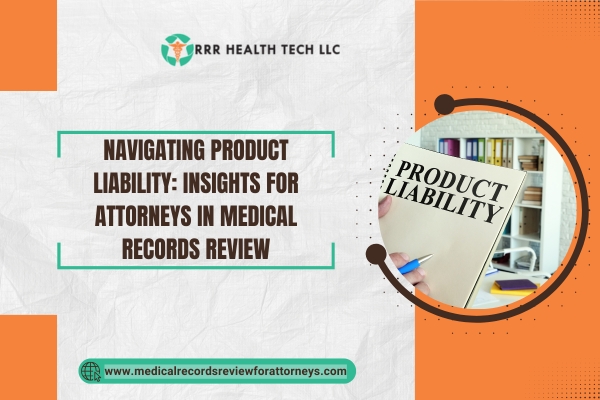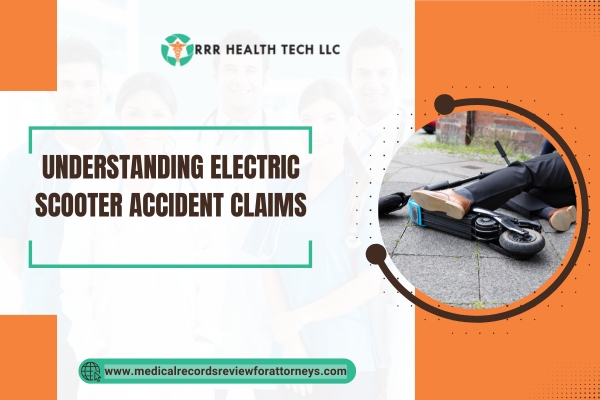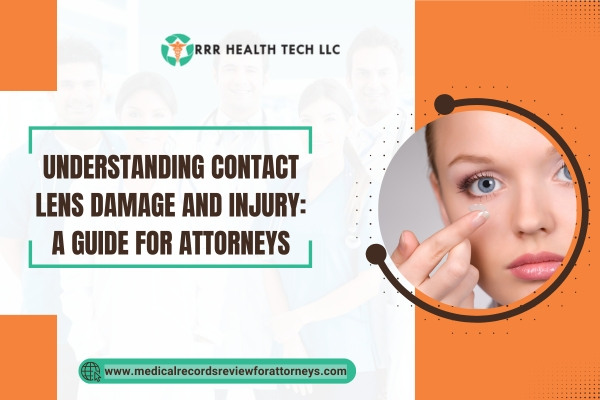
Introduction
Product liability is one of the most important aspects of law that recommends action against a manufacturer, distributor, or retailer for an item that is hazardous and has the potential of causing serious harm. Each case requires an approach which is tailored to the intricacies of the case and hence understanding the essence of product liability is very important. This article hopes to analyze product liability and explain how medical records review services assist attorneys in the United States.
What is a Product Liability?
• Definition: Product liability is the practice of holding a manufacturer or seller legally accountable for a claim made against them for their goods and services.
Types of Defects:
• Design Defects: A product is deemed unsafe if it is purposed to be or designed to be used in an unsafe manner.
• Manufacturing Defects: Mistakes made during the actual making of the product which makes the product unsafe.
• Marketing Defects: Telling too little or not the full expected capabality of an item warning or instruction.
Main Focus of Product Liability
• Manufacturers: The entity or legal body that is in charge of making the good.
• Distributors: Any participant who control the item from the maker to the shop.
• Retailers: The sellers of an offered product to the general public either in bulk or in retail through shops or online.
Legal Aspects of Product Liability in the US:
- Negligence: Not exercising reasonable care while selling or manufacturing a product.
- Strict Liability: Policiy under which a manufacturer is held liable for defective products regardless of negligence.
- Breach of Warranty: Violation of commitment in a contract about the standard and functionality of a product.
Common Problems in Product Liability
- Proving Defectiveness: Trying to prove a particular product as defective and that it caused some injury or harm can often prove to be very difficult.
- Causation: Evidence of causation that is the defect and the injury having causitive relationship.
- Defenses: The opposite side of the case that a consumer did misuse the product or the item was modified after buying.
How Medical Record Review Contributes To a Product Liability Case
- How Involve Bandaging: Medical records and well documented medical history provide vital proof in product liability cases with the victim injury case proving the degree of injury sustained along with the loss in the life.
- How Medical Record Review Services Aid In Litigation:
- Per Case Evaluation: Analyzing medical records to extract relevant details and information supporting claim or case.
- Testimony of Expert Witness: Commenting on issues of medicine that are related to the product underlying the defect.
- Coordination of Medical Records: Organizing and summarizing the vast array of medical records to prepare them for easy access and reference during court proceedings.
Trends and Statistics of Product Liablity (2024)
• Product liability claims have increased by 15% in the last year alone. This increase demonstrates the growing necessity for legal aid and attention in these matters.
• E-commerce is transforming the markets where retailers operate. The product liability landscape is also becoming more intricate as online retailers have distinct responsibilities related to their products.
Frequently asked Questions
Structured as a FAQ, the following are recurrent questions relatives or litigants ask regarding the nature of the case.
• What should I do if I believe that I have a case?
• Call a product liability attorney and discuss the particulars of your case with them.
• For how long do I have until I can claim product liability?
• Dependent on the state, there is duration from one year to six years.
• What are the different types of litigations for compensation?
• There can be a recovery of damages such as in medical expenses or lost work. Also for pain, suffering, and punitive damages
Case Study
Case Study 1: Medical Device with Issues
• Overview: A patient underwent an operation for an implantable surgical device, and the patient ended up having significant postoperative complications.
• Proving the defect and causation needed the overcome challenging hurdles.
• After reviewing the medical records, they uncovered prior complications that linked to the device, thus validating the claim.
Case Study 2: Defective Consumer Product
• Overview: An appliance accident in a family’s kitchen caused them injuries.
• Challenges: The problem was establishing the maker and showcasing the gaps in proof.
• Solutions: The manufacturer’s claims were settled after reviewing the medical history alongside the product’s history.
Conclusion
Attorneys need to understand the intricacies of product liability, especially in challenging scenarios involving defective products. With the assistance of medical records review services, attorneys can strengthen their strategies and improve the results for their clients. As product liability frameworks are continually developing, being ready and up to date is essential for accomplishing goals.


